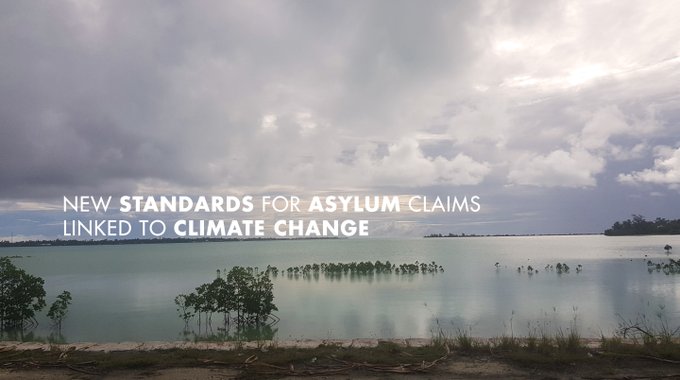But businesses and higher earners would face a hit to their incomes.

CALVIO VIA GETTY IMAGES
MONTREAL ― A basic income of $22,000 a year to all adult Canadians is financially doable, and would nearly eliminate poverty in the country, a new economic analysis argues ― but not without tax hikes for higher earners and a higher corporate tax rate.
The analysis from the Basic Income Canada Network (BICN) used a simulation database and model from Statistics Canada to predict how three different basic income programs would work. It picked $22,000 as the level because it’s an approximation of the cut-off point for a number of measures of poverty.
It found all three options would virtually eliminate poverty in Canada, with the share of people living below the low income cut-off dropping by as much as 95 per cent, depending on the program type. Families in the bottom 10 per cent of earners would see their disposable incomes jump by 3.5 to 4.5 times current levels. The country would also see an immediate and significant shrinking of the income gap.
The BICN report was released on Thursday.
Watch: Ontario’s basic income pilot project was “a blessing” to these small business owners.
Part of the point of the analysis was to address concerns ― even within the basic income movement ― that a workable basic income could be designed, said Sheila Regehr, chair of BICN.
The analysis showed that “there are ways of doing this (that) meet our objectives of reducing poverty, inequality and insecurity,” Regehr said in an interview with HuffPost Canada.
The analysis found a large part of the cost can be covered by shuffling around money from existing federal and provincial programs that would be made redundant by a basic income, such as the Working Income Tax Benefit and the GST/HST credit.
But it would still require additional revenue to keep it from driving up deficits.
The proposed basic income programs would raise $17.4 billion in revenue through a variety of policies championed by progressive economists as ways to address rising inequality.
This includes hiking the corporate tax rate to 15 per cent from 10 per cent and the small business tax rate to 13.5 per cent from 10.5 per cent. That would return those tax rates to levels they were at earlier this century, before successive rounds of cuts.
And in a move that would ruffle the feathers of higher earners, capital gains ― increases in the value of investments ― “would be treated the same” as income earned from work under the proposed options. Currently, only half the value of a capital gain is taxed as income. People’s principal residences would continue to be exempt.
It would also mean higher income taxes for some. Those in the top 10 per cent of earners ― with an income above $148,000 ― would see their disposable income cut by between 7.2 and 10.2 per cent, depending on the type of basic income.
No benefits above $60,000
But even some who consider themselves solidly middle earners would see higher taxes, thanks to the elimination of some tax breaks and higher tax brackets. The basic income’s benefit would fade completely at around the $60,000 income mark, and those above it could expect to see some increase in taxes.
Earners in the $60,000 to $80,000 range would see a reduction in disposable income of between 2.9 and 6.9 per cent, depending on the type of program, the analysis found.
It’s to (corporations’) advantage to have a population that’s stable, where people are able to get a good education and to be consumers for the things they are making.Sheila Regehr, chair of BICN
Regehr stresses that these are suggestions based on BICN’s principles, which include creating a more equitable tax system. “We’re not saying these are the only sources of revenue,” she said.
For those businesses and capital owners who stand to take a hit to their pocketbooks, she suggests taking the broader view, making an argument many basic income supporters champion: That lifting people out of poverty will create a stronger consumer class, helping businesses.
“It’s to (corporations’) advantage to have a population that’s stable, where people are able to get a good education and to be consumers for the things they are making. There’s a lot of symbiosis in there,” Regehr said.
The analysis shows “we have the money in this country (but) we’re spending it very ineffectively,” she added.
BICN’s three basic income options
All three of these options would involve the tax changes listed above. The costs would be covered through funding from existing programs that are folded into the basic income, and through the tax hikes BICN envisions.
The first option would see everyone aged 18 to 64 receive a basic income that tops up their income so that no one has less than $22,000 per year. As a person’s income grows, the basic income would be scaled back, with recipients losing 40 cents for every additional dollar earned from work. Seniors would retain Old Age Security (OAS) and the General Income Supplement (GIS) ― which are themselves a form of basic income ― while parents would retain the Canada Child Benefit. Cost: $134.45 billion.
The second option is the same as the first, except that it would include seniors, and the OAS and GIS, along with its funding, would be folded into the basic income. The Canada Child Benefit would remain. Annual cost: $187.49 billion.
The third option, sometimes called a “universal demogrant,” would see the government hand out $22,000 to everyone regardless of income. This makes it far and away the most costly option, but much of the cost would be recouped from higher earners through higher income tax brackets. Cost: $637.86 billion.



 UN
UN 








